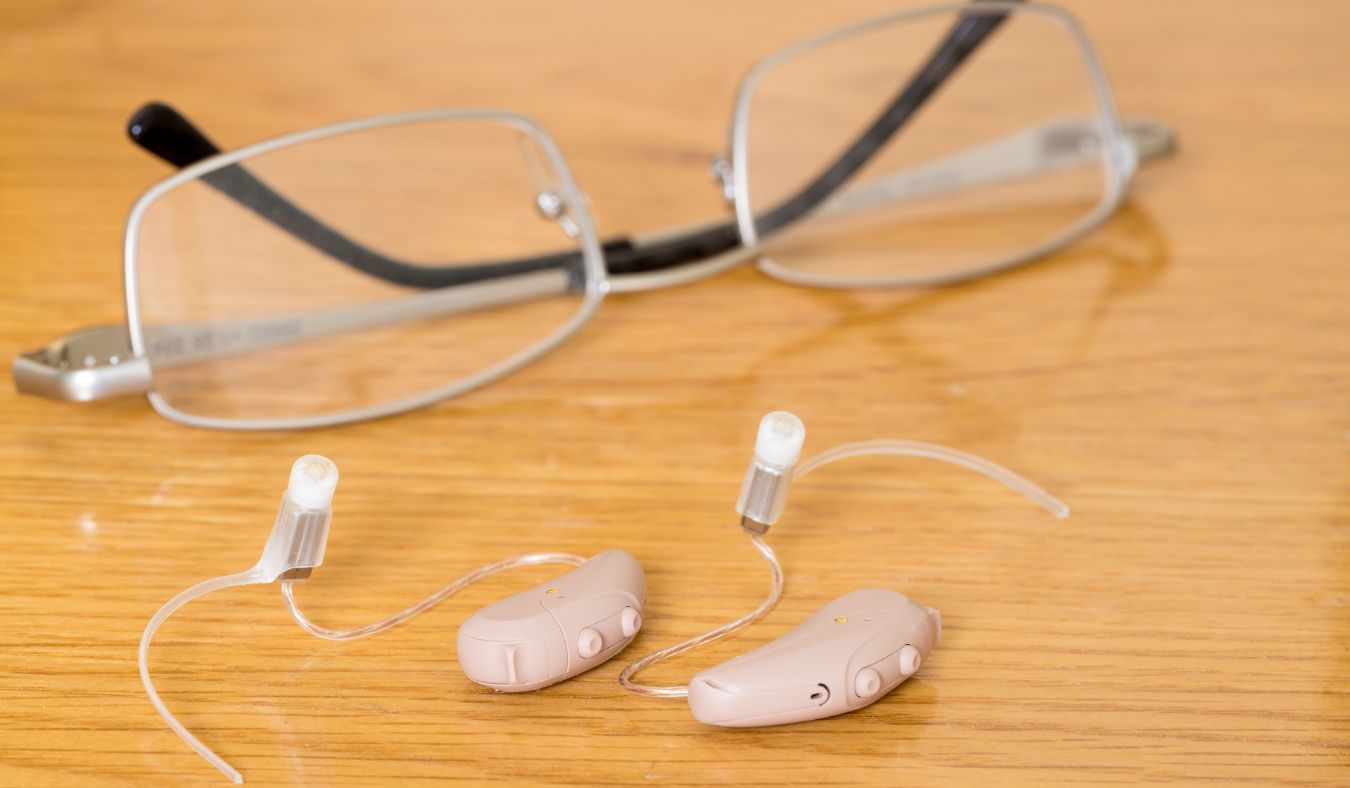The Impact of Hearing Aid Design on Wearer Comfort
When you’re choosing hearing aids, it’s easy to focus entirely

By: admin | October 20, 2025
When you’re choosing hearing aids, it’s easy to focus entirely on how well they’ll help you hear and overlook how they’ll actually feel throughout the day. But comfort plays a surprisingly big role in how successfully you use your hearing aids and how much benefit you get from them. When the fit feels right, you’re more likely to wear your hearing aids consistently throughout the day, which means you’re getting the full advantage of better hearing in all your daily activities.
Good design does more than just feel pleasant. It supports your ability to stay engaged in conversations, focus on your work and participate fully in social activities without distraction. When your hearing aids fit well and feel comfortable, you can give your full attention to what’s happening around you rather than thinking about what’s in your ears. Understanding how design influences comfort gives you the information you need to make a choice that truly works for your lifestyle and body.
Comfort plays a significant role in how often you wear your hearing aids and how well they work for you. Even minor discomfort can distract you from conversations or daily tasks. When your hearing aid feels good, it is easier to keep it on throughout the day.
A well-fitting device that does not cause soreness means you are less likely to remove or adjust it often, leading to more consistent hearing support during important moments. Comfortable hearing aids also help reduce tiredness or frustration that can come with new devices, making it easier to focus and enjoy daily activities.
The materials that make up hearing aids do more than shape their appearance; they directly affect how comfortable they are to wear each day. A hearing aid sits in or around sensitive areas of the ear, so the surface texture, weight and flexibility of its materials all play a part in how natural it feels over time. If a device is too rigid or made with materials that don’t suit your skin, it can cause pressure, warmth or mild irritation, especially when worn for several hours. Even small details, like how smooth the casing is or how it interacts with sweat and temperature changes, can make a noticeable difference in daily comfort.
Different materials also influence how well the hearing aid adapts to your body’s natural movements. Softer plastics and silicones tend to move more easily with the ear’s shape, which can help prevent rubbing or slipping. Lightweight metals like titanium and aluminum allow for durable designs that don’t feel heavy or tight. Modern materials are also designed to handle the mix of moisture and oils that naturally occur around the ear, helping the device stay comfortable throughout different activities and weather conditions.
A proper fit is essential for ensuring your hearing aid works well and remains comfortable over time. Many people experience soreness or irritation from a device that does not fit correctly, which can lead to removing it more often or not wearing it at all. Working with an audiologist to adjust the shape, size or style of your hearing aid can help address these issues and support regular, comfortable use each day.
Hearing aids come in several styles, each with unique comfort features. Some sit behind the ear, while others fit inside the ear canal. The main types include:
The size and shape of your ears play a major part in determining which hearing aids will feel comfortable, stay secure and provide clear sound. No two ears are exactly alike, and even small differences in ear canal width, curvature or outer ear structure can change how a device fits or performs. A hearing aid that fits too tightly can cause irritation or feedback, while one that’s too loose may slip out of place or allow unwanted background sounds to enter. Finding the right fit ensures not only physical comfort but also consistent sound quality throughout the day.
Custom measurements help audiologists match you with the most suitable style. People with narrow or curved ear canals may do better with smaller models that rest inside the canal, as these minimize pressure and are less noticeable when worn. Those with wider or more open ear canals often benefit from slightly larger designs that balance comfort and sound performance. The shape of the outer ear also matters, especially for behind-the-ear styles that rely on secure placement and proper tubing length for a natural listening experience.
Seasonal factors and lifestyle can add another layer to these decisions. For instance, someone who wears glasses or hats frequently may prefer a style that doesn’t interfere with those accessories. Others might choose a design that stays comfortable during physical activity or warm weather. Understanding how your unique ear shape, size and daily habits influence fit helps make hearing aids feel like a natural extension of you rather than something you have to manage or adjust throughout the day.
The weight and size of a hearing aid affect how comfortable it feels during long hours of use. Lighter devices usually cause less pressure on your ear. Smaller hearing aids may be less noticeable but can be harder to handle, while larger models might offer more features but could feel bulky.
Even a small difference in weight or size can change how your hearing aid feels by the end of the day. If you have sensitive ears or wear glasses, a heavier or larger device might cause soreness or slip out of place more often. Finding the right balance between size, weight and features helps support comfort and regular use throughout your daily routine.
Ventilation is an important feature in many hearing aids, especially for those who experience moisture or irritation in their ears. Small vents or air channels built into the device or earmold allow air to flow through, helping keep the ear canal drier and more comfortable.
For people prone to sweaty ears or skin sensitivity, these ventilation options can make daily wear much easier. A simple vent can help reduce the chance of itching or soreness while using your hearing aid.
When choosing between custom molds and standard molds for your hearing aid, the main difference is how well the device fits your ear. Standard molds are pre-made and come in general sizes, while custom molds are shaped to match the exact curves of your ear.
Custom molds can offer a more secure and comfortable fit, especially if you have an unusual ear shape or need extra support. Standard molds may work well for some people, but they might not seal as tightly or stay in place as well during daily activities. A better fit from a custom mold can also help reduce feedback noise and make wearing your hearing aid feel more natural throughout the day.
Soft ear tips are common in many modern hearing aids and can make a noticeable difference in how your device feels during daily use. These tips are usually made from flexible silicone, which is gentle on the skin and helps create a comfortable seal in the ear.
Soft ear tips help reduce pressure points that can lead to soreness or irritation, especially when wearing your hearing aid for long periods. The flexibility of these tips allows them to adjust to the unique shape of your ear canal, improving both comfort and sound quality.
Many people find that soft ear tips also help keep the hearing aid securely in place. A good fit means less slipping or movement, which is helpful during activities like talking, eating or exercising. This added comfort often leads to more consistent use of your hearing aid throughout the day.
Adjusting to a new hearing aid design can take some time, even if you have worn hearing aids before. Each style or fit may feel different at first, and small changes in shape or controls can affect your daily routine.
To help make the adjustment easier, try these tips:
The design of your hearing aid influences how comfortable it feels and how often you choose to wear it. Paying attention to details like fit, materials and features helps you find a device that supports your daily routine without causing irritation or discomfort. The audiologist is here to help you explore different styles and options so your hearing aid matches both your needs and the shape of your ear.
If you have questions about which hearing aid design might work best for you, or if you want to try different options for better comfort, contact the Davis Audiology team at any of our Greenville, Simpsonville or Spartanburg locations. Call (864) 810-6238 for more information or to schedule an appointment. We are here to help you find a comfortable solution for everyday use.

When you’re choosing hearing aids, it’s easy to focus entirely
By: admin | October 20, 2025

Summer heat affects hearing aids differently than you might expect. When
By: admin | July 29, 2025

Music plays different roles in people’s lives; it motivates you
By: admin | June 20, 2025
